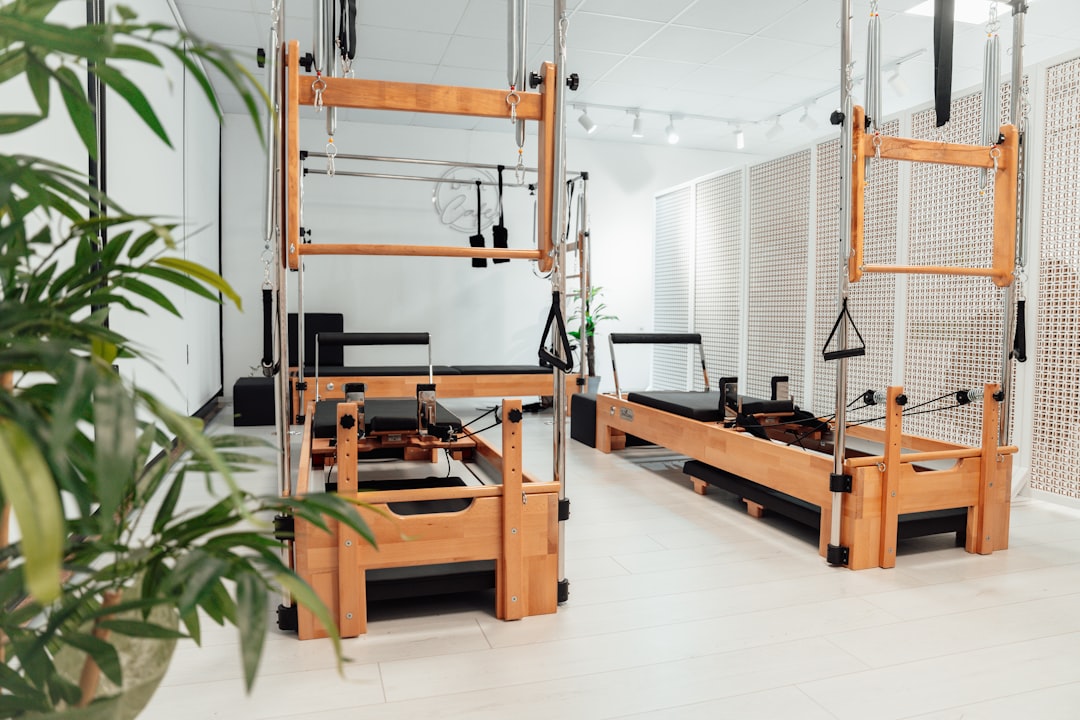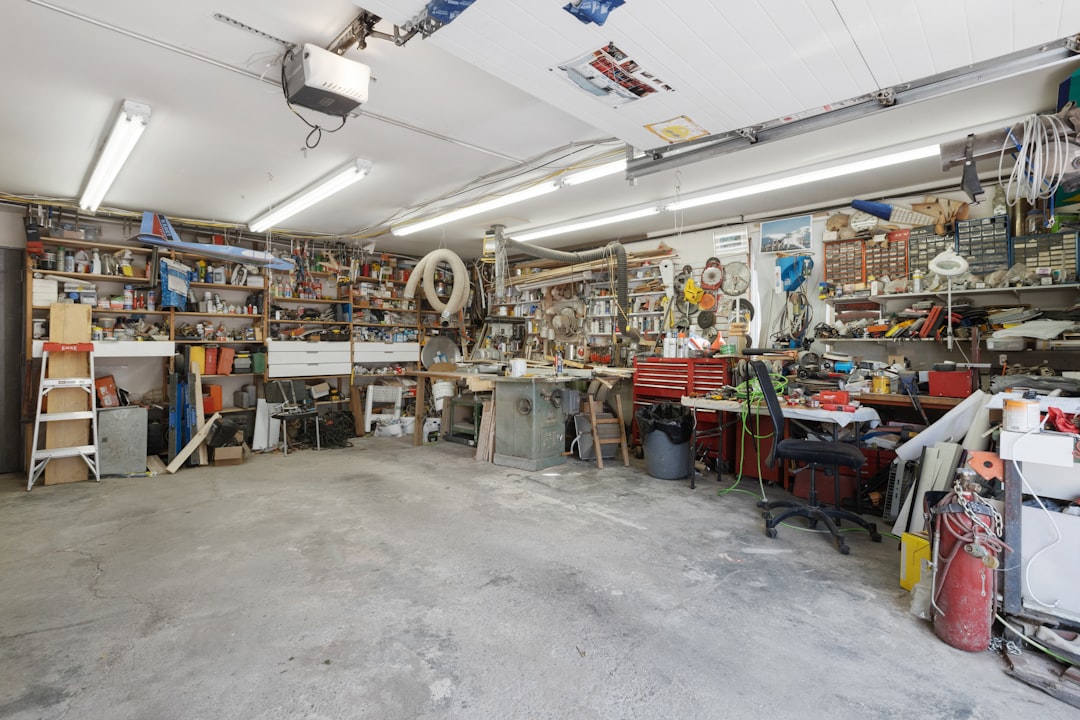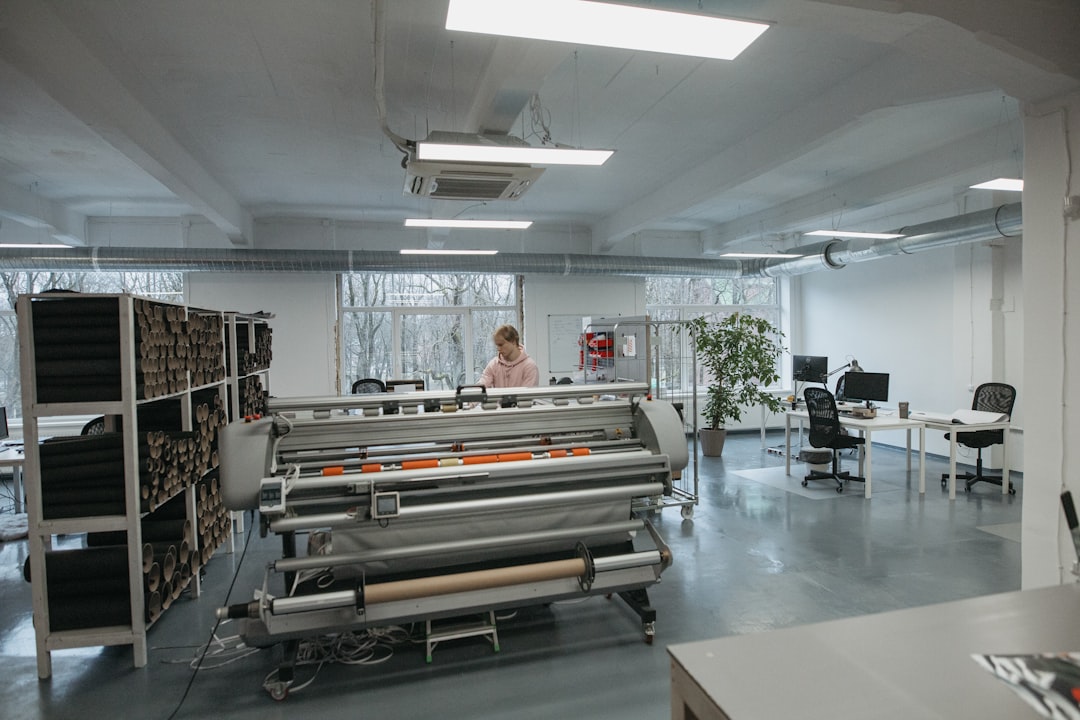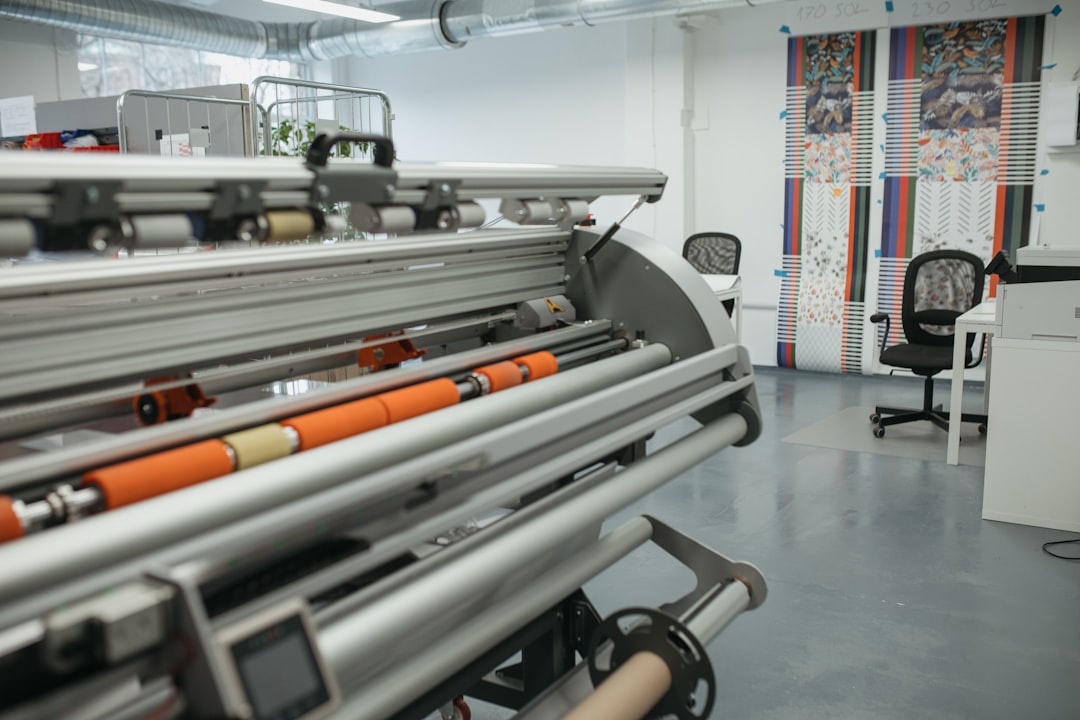

Engage prospects with a scan and streamline customer engagement with FREE QR code marketing tools by Sona – no strings attached!
Create a Free QR CodeFree consultation

No commitment

Engage prospects with a scan and streamline customer engagement with FREE QR code marketing tools by Sona – no strings attached!
Create a Free QR CodeFree consultation

No commitment
Carpet fabrication workrooms are experiencing a new wave of digital transformation as traditional processes give way to faster, more interactive solutions. Technicians, designers, and installers in these specialized environments have long relied on manual paperwork, printed instructions, and fragmented communication channels to guide custom carpet installations and repairs. These outdated methods introduce friction, hinder visibility into high-value prospects, and create opportunities for error, especially when managing multiple job sites or intricate custom orders. Tracking issues and missing account-level data often mean that high-value leads or urgent service needs slip through the cracks, leaving revenue and client satisfaction at risk.
QR code integration represents a strategic leap forward for carpet fabrication workrooms by providing seamless access to digital content, specifications, and installation guides directly from the workroom floor or client location. With just a scan, technicians can retrieve up-to-date instructions, request support, or log service milestones, all while tracking real-time project data with Sona QR’s product overview. This immediate visibility helps ensure that opportunities are pursued efficiently and that technician actions are consistently aligned with business goals.
This guide shows how QR codes can be deployed to optimize technician support, streamline carpet manufacturing equipment usage, and drive measurable improvements across every stage of the carpet fabrication process. By modernizing touchpoints between the physical and digital worlds, carpet fabrication workrooms can achieve higher efficiency, reduce manual errors, and unlock new opportunities in custom carpet design and sustainable production while ensuring both leads and revenue opportunities are never lost due to gaps in data or workflow communication.

Carpet fabrication workrooms often struggle with inconsistent technician performance and lengthy onboarding due to reliance on static manuals and slow, paper-based processes. Printed cut sheets can be out of date within days, laminated checklists go missing, and service logs sit in binders that nobody consults when the work is happening under time pressure. As teams move between multiple jobs, cities, and clients, knowledge does not always travel with them, and the cost of small mistakes adds up quickly.
QR codes elevate technician productivity and make support scalable by transforming paper-based resources and printed checklists into dynamic digital flows. A scan on a machine tag can open a video showing the exact threading sequence for a tufting gun. A scan on a roll label can display the current installation plan, edge finishing notes, and an escalation protocol if the installer encounters a site constraint. As content changes, dynamic QR codes update instantly without reprinting, ensuring technicians always see the latest approved procedure. For industry context, see how teams are using QR codes in flooring.
Modern QR management platforms such as Sona QR make it possible to update destination content instantly and monitor interaction at the account level. Managers get an actionable audit trail across shops, teams, and client locations, which supports consistent service quality, earlier interventions when support is needed, and smarter investments in training and content. Start creating QR codes for free.

Workrooms face several persistent challenges: bridging offline-to-online data gaps, quickly updating critical procedures, and reducing the friction of analog communication. When paper-based work orders, support logs, or product reference cards are misplaced or outdated, opportunity cost and technician downtime rise. A missed or outdated service log results in operational inefficiency and can prevent accurate project tracking, leading to missed upsell opportunities in after-service support.
QR codes directly address these needs by transforming static artifacts into connected, living resources. The same printed roll tag can become a portal to version-controlled installation notes. The same safety poster can become a gateway to incident reporting and one-tap supervisor contact. Over time, scan data reveals where training is effective, where jobs slow down, and which messages drive action, creating a cycle of continuous improvement.
With these factors in play, QR codes are not just labels or shortcuts. They become the connective tissue between technician action and management insight, making it less likely that high-value opportunities slip by due to incomplete information or disconnected communication.

Carpet fabrication workrooms encounter diverse technical and customer scenarios, each requiring reliable, real-time access to different types of information. Installers may need video guidance at a staircase turn. Designers may need a quick path to approve a binding style. Maintenance teams may need historical service notes and parts ordering links at the machine. One-size-fits-all documentation cannot meet these varied needs.
A thoughtful mix of QR code formats solves this fragmentation by matching the intent of the moment to the most efficient action. The right format reduces friction, speeds decision-making, and makes data capture automatic rather than a burdensome chore.
In carpet fabrication, web links and forms tend to drive the most value since they can consolidate drawings, tolerances, adhesives, and timeline details in one place. SMS and email prefill are powerful for closing the loop on job completion and incident reporting. With Sona QR, you can generate all of these formats, manage them centrally, and swap destinations as work evolves without changing the physical code. For quick data capture, link codes to Google Forms.
Growth bottlenecks in carpet fabrication often stem from missed customer engagements, overlooked upsell opportunities, and inefficiency caused by static, analog touchpoints. A forgotten care instruction in a shipment can generate costly callbacks. An unlogged equipment maintenance event can lead to a preventable breakdown. A trade show contact lost in a stack of business cards can mean an expensive missed deal.
Strategic QR placements surface these hidden opportunities and create a feedback loop across the supply chain. Every scan is a chance to educate, collect data, and progress a relationship. Properly designed QR touchpoints turn moments of curiosity into action and moments of risk into support.
This approach elevates engagement throughout the lifecycle. By placing QR codes where technicians and clients already are, workrooms reduce friction, strengthen trust, and generate measurable lift across installation quality, upsell conversion, and service responsiveness.

Real operational pain points in carpet fabrication arise when service records go unlogged, installers do not receive updated guides, or client customization is handled via fragmented back-and-forth emails. Each delay compounds risk. Missed details slow installations, increase rework, and erode client confidence. QR-augmented workflows reduce these risks by connecting action to information in the same physical moment.
The highest-impact use cases pair a defined trigger with a clear next step. Whether the goal is accuracy, speed, or documentation, QR codes bridge the gap without forcing teams to learn new systems or find hidden files.
These use cases are simple to deploy and scale. As scan activity accumulates, you will see where teams need extra guidance, which products trigger the most questions, and how approvals flow in the real world. Use those insights to refine content, prioritize training, and improve handoffs between design, fabrication, and installation.
Many workrooms miss recurring revenue because they do not know who is engaging with their materials or when a technician or customer is ready for the next service or purchase. Untracked scans and anonymous traffic make it difficult to time outreach. As a result, qualified leads go unnoticed, certification programs see low completion, and upsell offers miss their moment.
Each QR scan is a signal: why someone scanned, where they were, and which resource they needed. By deploying multiple codes across touchpoints, you can segment your audiences automatically and fuel precise follow-up campaigns that reflect real behavior rather than guesswork.
For example, a technician who scans an installation guide can be enrolled in an advanced edge-finishing certification sequence, while a designer who scans a new line of sustainable fibers can receive early access to launch samples and a consultation booking link. Over time, this segmentation multiplies conversion rates and lifetime value. To operationalize follow-up, use intent-driven retargeting.
Disconnected campaigns drain budgets. When print assets, digital ads, showroom signage, and technician workflows do not share data, prospects fall through the cracks and teams repeat work. QR codes unify these touchpoints, tying offline attention to online action while capturing data you can use across channels.
In a carpet fabrication context, QR codes act as connectors between catalogs, samples, project packets, and events. They also provide a simple onramp for service and training that technicians will actually use. The result is a tighter customer journey and a clearer view of what media and messages work best.
By making QR codes the offline onramp to your digital marketing engine, you gain a new layer of measurement across channels that were previously opaque. With Sona QR as your centralized platform, you can manage all codes, monitor performance in one dashboard, and sync scan activity with your CRM and ad accounts for continuous optimization.
Launching a QR program is straightforward when you treat it like any other growth initiative: start with a clear problem, design for the user, deploy where it matters, then measure and improve. The goal is to connect the physical world of rolls, machines, and installers with the digital workflows that drive speed and quality.
Use the following steps to align teams, ensure scannability across environments, and generate the data you need to prove impact. Each step includes practical considerations specific to carpet fabrication workrooms.
Clarify the bottleneck you want to fix. Examples include incomplete installations due to missing instructions, unlogged maintenance that leads to breakdowns, or high error rates on custom edging orders. Frame a concrete outcome such as reduce installation errors by 30 percent on stair runners or capture 90 percent of maintenance events on tufting equipment.
Choose between static and dynamic codes based on how often your content changes and whether you need analytics. Static codes are fine for permanent resources like a safety manual PDF. Dynamic codes are essential for instructions, specs, or offers that evolve, and for any use case where tracking and retargeting matter.
Technicians scan under pressure, often with gloved hands, uneven lighting, and dust in the air. Make your codes large, high contrast, and surrounded by a quiet zone. Add short, action-oriented CTAs that set expectations and highlight the benefit.
Place codes where they will be used. Prioritize product labeling, key equipment panels, technician workstation signage, delivery paperwork, and client info packs. Consider environmental factors such as heat, vibration, and moisture, and use durable materials like laminated labels or metal plates.
Launch with a clear reporting cadence. Use Sona QR to monitor scan rates, content engagement, and conversion actions such as form submits or video completions. Run A/B tests on CTAs, landing page formats, and code size to improve results. Share wins and lessons learned with technicians to build momentum.
By following these steps, workrooms close data gaps, reduce errors, and turn every scan into a measurable improvement in technician support and customer experience.

Workroom leaders often struggle to connect technician activity or client inquiries to completed jobs, upsells, or renewals. Counting scans alone does not show whether a video prevented a mistake or a care guide prevented a callback. Without end-to-end attribution, teams cannot tell which interventions drive revenue and which are noise.
A robust analytics approach turns each QR touchpoint into a source of truth. By capturing scan context, linking it to downstream actions, and syncing with your CRM, you can attribute outcomes to the exact content and placements that caused them. This enables better budgeting, faster decision-making, and smarter coaching for technicians.
The result is a closed-loop system where technician actions, client interactions, and financial outcomes line up clearly. You move from guessing to knowing, and from blanket training to targeted interventions that produce measurable gains.
To keep pace with complex client needs and rising service expectations, workrooms should refine QR deployments continually. The largest gains come from standardization and feedback loops: unique codes by placement, consistent tagging, automation that responds to scans, and staff who understand the value of scanning.
Start by focusing on the media and moments most common in your environment. For carpet fabrication, these include roll labels, machine panels, QC stations, installation kits, and sample cards. Layer in automation so every scan is actionable and visible to the people who can help.
Creative ideas include printing QR codes on the back of carpet sample swatches to pull up specifications during client presentations, placing QR codes on invoices to schedule annual care and maintenance, and embedding codes on edge-binding carts that open quick threading videos and consumable reorder forms. For inspiration, see custom carpet branding and community-built QR code rugs. These touches save minutes many times a day, which compounds into hours saved and errors avoided across a team.
The evolution of carpet fabrication workrooms hinges on bridging the divide between the hands-on nature of craftsmanship and the demands of digital efficiency. Persistent challenges such as missed leads, lack of technician engagement tracking, and fragmented support documentation can quietly erode both profitability and reputation. QR codes offer a practical, scalable bridge. They give technicians live access to knowledge, create a unified trail of engagement, and let managers attribute outcomes to the moments and messages that matter.
With strategic QR integration, workrooms secure instant jobsite support, ensure precision in custom carpet execution, and gain analytics that fuel process refinement and revenue growth. From machine maintenance logs and installation guides to post-delivery care and retargeting, the right QR strategy turns every surface into an opportunity for clarity, action, and measurement.
Carpet fabrication workrooms are leaning into QR technology to drive technician success, elevate quality control, and streamline project management. By solving common pain points such as untracked technician actions and lost high-value leads with connected digital touchpoints, teams reduce errors, optimize workflows, and deliver unmatched support for field crews and clients alike. With QR solutions that are flexible, trackable, and instantly updatable through platforms like Sona QR and Sona.com, your workroom is better equipped to navigate modern demands, capture unseen opportunities, and set new standards for operational excellence and customer satisfaction.
QR codes have revolutionized carpet fabrication workrooms by streamlining technician support and boosting operational efficiency. From instant access to detailed fabrication specs to real-time updates and troubleshooting guides, QR codes eliminate guesswork and reduce downtime, empowering technicians to work smarter and faster. Imagine technicians scanning a code and immediately receiving precise instructions tailored to each carpet project—transforming workflow and quality control.
With Sona QR, you can effortlessly create dynamic, trackable QR codes that update instantly without reprinting, ensuring your team always has the latest information at their fingertips. Track every scan to identify bottlenecks, improve training, and connect technician performance directly to project success. Start for free with Sona QR today and elevate your carpet fabrication workroom into a hub of efficiency and innovation.
Carpet fabrication involves customizing carpets through stages like manufacturing, installation, and quality control, traditionally relying on manual paperwork and printed instructions but now evolving with digital tools such as QR codes to improve efficiency and accuracy.
QR codes can be placed on equipment, roll labels, workstations, and packaging to provide technicians and installers instant access to updated installation guides, maintenance logs, support requests, and customization forms, enabling real-time project tracking and streamlined workflows.
Using QR codes increases efficiency, reduces manual errors, ensures technicians access the latest procedures, improves communication, tracks real-time data, supports faster onboarding, and helps capture high-value leads and service opportunities that might otherwise be missed.
Workrooms can embed QR codes on samples, project binders, and invoices to provide clients with specifications, approval forms, care instructions, and reorder portals, which supports clear communication, shortens approval cycles, and reinforces brand engagement throughout the customer journey.
Recent innovations include integrating dynamic QR codes that link physical carpet components to digital content such as video tutorials, maintenance histories, live installation plans, and interactive marketing tools, all managed through platforms like Sona QR to enable instant updates, analytics, and multi-channel marketing integration.
QR codes replace outdated paper manuals with dynamic digital instructions accessible via scanning, which reduces errors, accelerates onboarding, provides live troubleshooting, and enables managers to track technician activity and intervene promptly.
Common QR code formats include web links to videos and specs, vCards for contact information, SMS or email prefills for reporting, Wi-Fi access codes for contractor connectivity, and app download links for specialized tools.
QR codes should be strategically placed on carpet rolls, machinery, toolkits, packing slips, delivery packaging, workstation signage, and client materials to provide immediate access to relevant information and support throughout the fabrication and installation process.
Workrooms can track scan volume, location, timing, and content engagement using QR management platforms, then correlate this data with installation quality, error rates, technician performance, and revenue outcomes to optimize workflows and training.
They should define clear use cases and measurable goals, select appropriate static or dynamic QR code types, design user-friendly codes with clear calls to action, deploy codes strategically in key locations, and continuously track scan data to optimize content and processes.
By linking to updated installation guides, maintenance records, and quality checklists accessible via scans, QR codes enable consistent standards, early error detection, and documented proof of compliance and quality trends.
QR codes unify offline and online marketing by linking catalogs, trade show materials, direct mail, and showroom signage to interactive content, lead capture forms, appointment schedulers, and retargeting campaigns that enhance customer interaction and measure ROI.
By deploying unique QR codes at different buyer journey stages and tagging scans by role and intent, workrooms can segment audiences, sync data with CRMs, and trigger personalized follow-ups and marketing campaigns based on real user behavior.
Use unique codes for each asset or placement, add tracking parameters to URLs, automate follow-up communications based on scans, and educate technicians on the benefits of scanning to build engagement and reduce errors.
Use Sona QR's trackable codes to improve customer acquisition and engagement today.
Create Your FREE Trackable QR Code in SecondsJoin results-focused teams combining Sona Platform automation with advanced Google Ads strategies to scale lead generation

Connect your existing CRM

Free Account Enrichment

No setup fees
No commitment required

Free consultation

Get a custom Google Ads roadmap for your business






Launch campaigns that generate qualified leads in 30 days or less.
